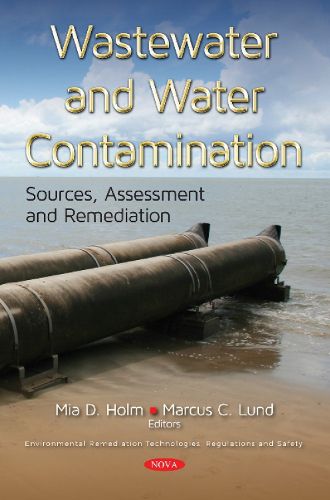Readings Newsletter
Become a Readings Member to make your shopping experience even easier.
Sign in or sign up for free!
You’re not far away from qualifying for FREE standard shipping within Australia
You’ve qualified for FREE standard shipping within Australia
The cart is loading…






In this compilation, the authors open with an address of alternative advanced technologies that effectively meet the desired level of removal of recalcitrant contaminants from water. They discuss the advantages and disadvantages of different state of the art technologies, assess the need for further development, as well as estimate the potential for large scale applications based on technological advancement and availability. Next, the book delves into the origin of chitin, which can be traced back to 1811 when it was first discovered in mushrooms by Henri Braconnot while he was Professor of Natural History and Director of the Botanical Gardens at the Academy of Science in France. Twenty years later, chitin was isolated in insects. In 1878, Ledderhose determined that chitin was constructed of glucosamine and acetic acid. The subsequent chapter presents results of an experiment analyzing the concentration of dissolved substances as a major factor that determines the efficiency of membrane separation for wastewater treatment. The results show that selectivity of different types of semi-permeable membranes in a wide range of concentrations can be predicted with sufficient accuracy. Another paper deals with aerobic treatment, i.e. the activated sludge method and the anaerobic process. Activated sludge is the most widely used method to bring about stabilization in wastewater having organic matter constituents. The possibilities of function are analysed in this sludge system, and a short outline is given about the humans plans in the future with connection of the biological waste water treatment. The closing paper discusses the treatment of wastewater from surfactants, as its application has increased markedly both in everyday life and in many industrial branches. Water containing surfactants is fatal for the environment and has a toxic impact on the human body, causing cancerogenic, mutagenic and allergenic effects. Thus, there is a great need for reliable water treatment in chemically developed countries.
$9.00 standard shipping within Australia
FREE standard shipping within Australia for orders over $100.00
Express & International shipping calculated at checkout
In this compilation, the authors open with an address of alternative advanced technologies that effectively meet the desired level of removal of recalcitrant contaminants from water. They discuss the advantages and disadvantages of different state of the art technologies, assess the need for further development, as well as estimate the potential for large scale applications based on technological advancement and availability. Next, the book delves into the origin of chitin, which can be traced back to 1811 when it was first discovered in mushrooms by Henri Braconnot while he was Professor of Natural History and Director of the Botanical Gardens at the Academy of Science in France. Twenty years later, chitin was isolated in insects. In 1878, Ledderhose determined that chitin was constructed of glucosamine and acetic acid. The subsequent chapter presents results of an experiment analyzing the concentration of dissolved substances as a major factor that determines the efficiency of membrane separation for wastewater treatment. The results show that selectivity of different types of semi-permeable membranes in a wide range of concentrations can be predicted with sufficient accuracy. Another paper deals with aerobic treatment, i.e. the activated sludge method and the anaerobic process. Activated sludge is the most widely used method to bring about stabilization in wastewater having organic matter constituents. The possibilities of function are analysed in this sludge system, and a short outline is given about the humans plans in the future with connection of the biological waste water treatment. The closing paper discusses the treatment of wastewater from surfactants, as its application has increased markedly both in everyday life and in many industrial branches. Water containing surfactants is fatal for the environment and has a toxic impact on the human body, causing cancerogenic, mutagenic and allergenic effects. Thus, there is a great need for reliable water treatment in chemically developed countries.